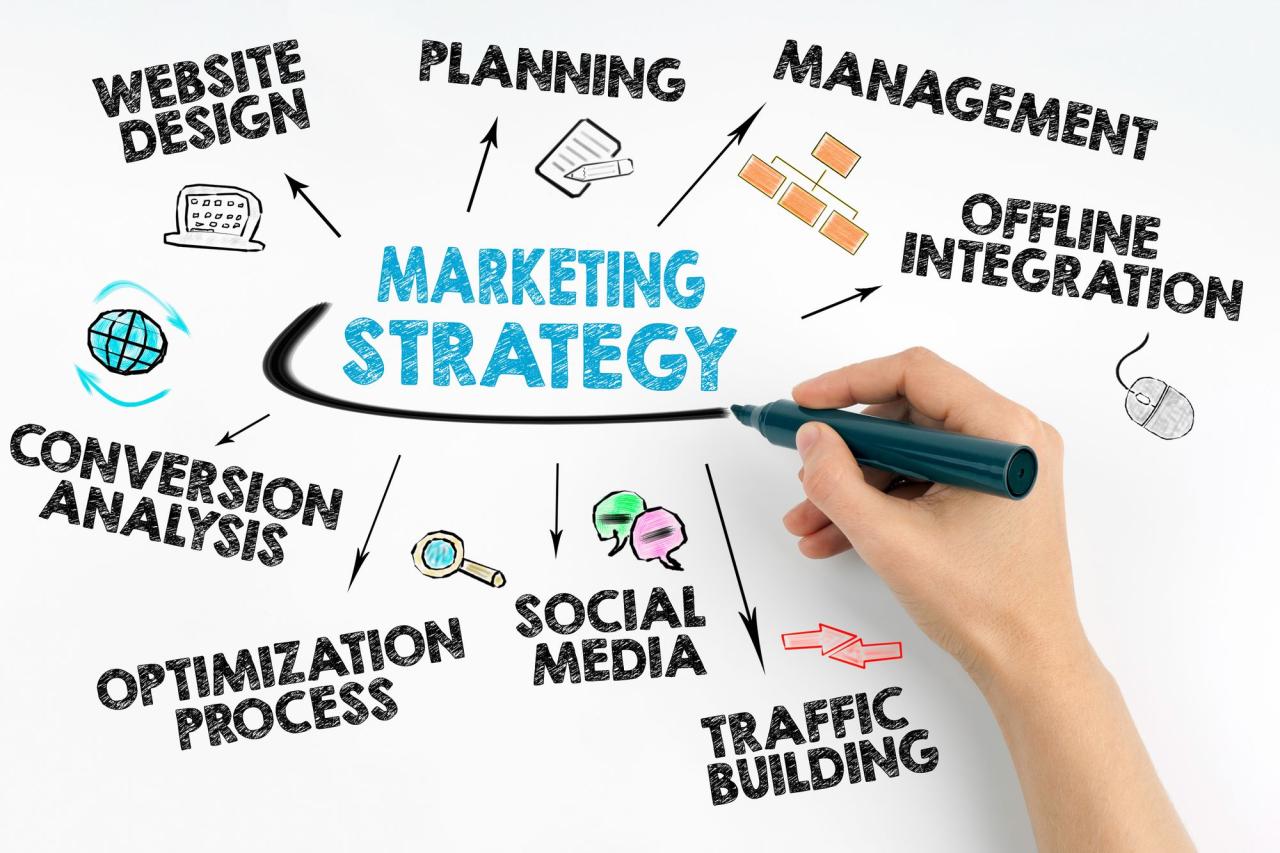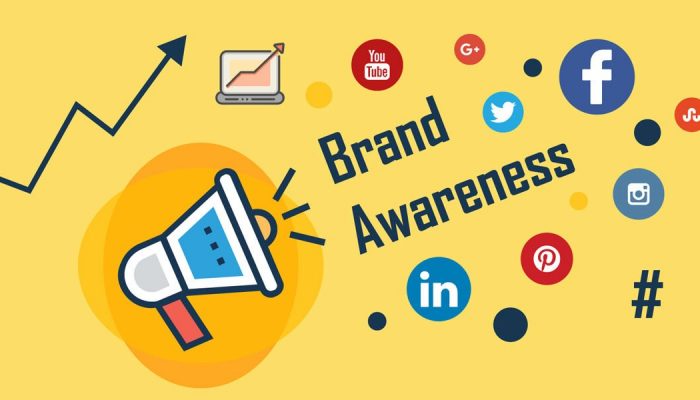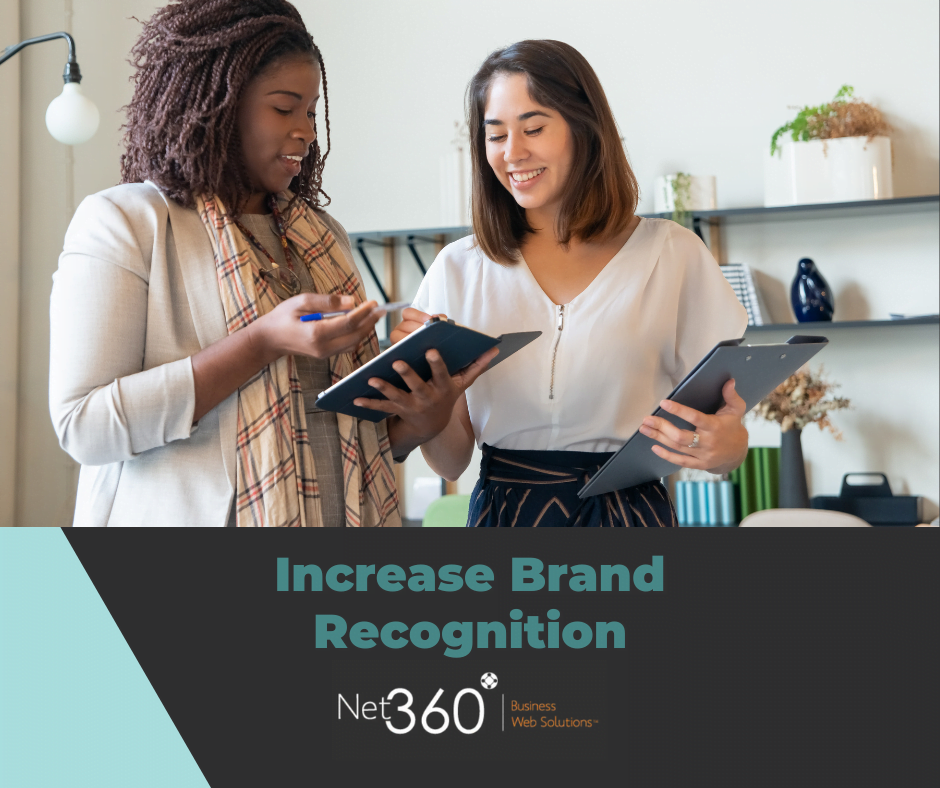Brand awareness campaigns are crucial for establishing a strong market presence. This guide delves into the multifaceted strategies involved in crafting and executing successful campaigns, from defining core components and identifying target audiences to selecting effective media channels and measuring campaign performance. We will explore various campaign types, highlighting best practices and emerging trends to help you build a robust brand identity.
Understanding how to effectively reach your target audience is paramount. We will examine different segmentation techniques, develop compelling messaging tailored to specific demographics, and discuss the importance of consistent brand voice across all platforms. Ultimately, the goal is to create memorable campaigns that resonate with consumers and drive lasting brand recognition.
Defining Brand Awareness Campaigns

Brand awareness campaigns are strategic marketing initiatives designed to increase the visibility and recognition of a brand among its target audience. Success hinges on crafting a compelling message and delivering it through channels that resonate with consumers, ultimately fostering a positive association with the brand. These campaigns are crucial for establishing a strong brand presence in a competitive marketplace and driving long-term growth.
Brand awareness campaigns are multifaceted and require a well-defined strategy encompassing several key components. A clear understanding of the target audience is paramount, allowing for the creation of tailored messaging and selection of appropriate channels. The campaign’s core message must be concise, memorable, and consistent across all platforms. Effective campaigns also necessitate a robust budget allocation and a detailed implementation plan, ensuring that resources are utilized efficiently and objectives are met. Finally, consistent monitoring and analysis are crucial for making necessary adjustments throughout the campaign’s lifecycle.
Types of Brand Awareness Campaigns
Different types of brand awareness campaigns leverage various media and experiences to reach the target audience. The choice of approach depends on the brand’s objectives, target audience demographics, and budget. A multi-channel approach often yields the best results, combining different strategies to maximize reach and impact.
- Social Media Campaigns: These campaigns utilize platforms like Facebook, Instagram, Twitter, and TikTok to engage audiences through organic content, paid advertising, and influencer marketing. For example, a clothing brand might run a contest on Instagram encouraging users to share photos wearing their clothes using a branded hashtag. This increases visibility and generates user-generated content.
- Print Campaigns: Traditional print media, such as magazines and newspapers, can still be effective, particularly for reaching older demographics or building credibility. A luxury car brand might choose a full-page advertisement in a high-end lifestyle magazine to project an image of sophistication and exclusivity.
- Experiential Campaigns: These campaigns create immersive experiences that engage consumers directly. Think of a pop-up shop in a busy city center offering free samples and interactive activities. A beverage company might sponsor a music festival to associate its brand with positive experiences and create memorable moments.
Key Performance Indicators (KPIs) for Brand Awareness Campaigns
Measuring the success of a brand awareness campaign requires carefully selected KPIs that provide insights into the campaign’s impact. These metrics should align with the overall campaign goals and provide a clear picture of progress.
- Brand Recall: This measures the percentage of consumers who can remember the brand name when prompted. High brand recall suggests effective messaging and strong brand recognition.
- Brand Recognition: This measures the percentage of consumers who can identify the brand’s logo or other visual elements. Strong brand recognition indicates a successful visual identity.
- Website Traffic: An increase in website traffic from campaign-related activities indicates successful redirection of consumers to the brand’s online presence.
- Social Media Engagement: Metrics like likes, shares, comments, and mentions on social media platforms reflect audience interaction and engagement with the brand’s messaging.
- Reach and Impressions: These metrics indicate the number of unique individuals exposed to the campaign’s messaging and the total number of times the message was displayed.
Target Audience Identification and Segmentation

Defining your target audience is crucial for the success of any brand awareness campaign. A well-defined target audience allows for efficient resource allocation, more impactful messaging, and ultimately, a higher return on investment. Without a clear understanding of who you’re trying to reach, your campaign efforts risk being scattered and ineffective.
Identifying and segmenting your target audience involves a multi-faceted approach that combines market research, data analysis, and a deep understanding of your brand’s values and positioning. This process helps you move beyond broad demographics and delve into the specific needs, motivations, and behaviors of your ideal customers. By understanding your audience intimately, you can craft targeted messaging and choose the most effective channels to reach them.
Methods for Identifying and Segmenting Target Audiences
Several methods exist for identifying and segmenting target audiences. These methods often overlap and are used in combination for a comprehensive understanding. Market research, including surveys and focus groups, provides direct insights into consumer preferences and behaviors. Analyzing existing customer data, such as purchase history and website interactions, reveals patterns and trends that can inform segmentation strategies. Competitive analysis helps identify underserved market segments and opportunities for differentiation. Finally, leveraging social media analytics provides valuable information on audience demographics, interests, and online behavior.
Examples of Effective Audience Personas and Their Application in Campaign Development, Brand awareness campaigns
Effective audience personas are detailed representations of your ideal customers. They go beyond simple demographic data to encompass psychographic information, such as values, lifestyle, and motivations. For example, consider a sustainable clothing brand targeting environmentally conscious millennials. One persona might be “Eco-Emily,” a 28-year-old female living in an urban area, passionate about ethical and sustainable fashion, active on social media, and concerned about the environmental impact of her purchases. Knowing Eco-Emily’s characteristics allows the brand to tailor its messaging to resonate with her values, utilizing platforms like Instagram and focusing on the ethical sourcing and eco-friendly materials used in their clothing. Another persona might be “Sustainable Sam,” a 35-year-old male, environmentally aware, interested in durability and functionality, and prefers online shopping experiences. This segmentation would lead to different messaging and channel strategies.
Segmentation Techniques and Their Suitability for Various Campaign Types
| Segmentation Technique | Description | Suitable Campaign Types | Example |
|---|---|---|---|
| Demographic | Age, gender, income, education, location, etc. | Broad brand awareness campaigns | Targeting a specific age group with TV commercials. |
| Geographic | Location, climate, urban/rural | Local or regional campaigns | Running a radio ad campaign in a specific city. |
| Psychographic | Values, lifestyle, interests, personality | Targeted campaigns focused on specific values | Targeting environmentally conscious consumers with social media ads highlighting sustainable practices. |
| Behavioral | Purchase history, website usage, social media engagement | Personalized retargeting campaigns | Showing ads for products viewed on a website to potential customers. |
Campaign Messaging and Creative Development
Crafting compelling messaging and visually striking creative elements is crucial for a successful brand awareness campaign. The goal is to resonate with your target audience on an emotional level, fostering a positive association with your brand and ultimately driving increased awareness. This involves a strategic approach encompassing messaging tailored to specific audience segments and the consistent application of brand identity across all campaign materials.
Effective communication hinges on understanding your audience’s needs, desires, and pain points. A poorly defined message can lead to wasted resources and a lack of engagement. Conversely, a well-crafted message, tailored to the specific nuances of each segment, can significantly amplify campaign impact. This section will delve into the development of compelling messaging and the creation of visually appealing and memorable campaign elements, emphasizing the importance of maintaining a consistent brand voice and visual identity.
Compelling Brand Messaging Tailored to Different Target Audience Segments
Developing distinct messaging for different target audience segments is vital for maximizing campaign effectiveness. Each segment has unique characteristics, values, and communication preferences. Consider, for example, a campaign for a new sustainable clothing line. The messaging for environmentally conscious millennials might focus on ethical sourcing and eco-friendly materials, while messaging for a more price-conscious audience could emphasize affordability and value without compromising quality. By segmenting your audience and tailoring your messaging accordingly, you ensure that your message resonates with each group, improving the chances of achieving higher engagement and brand recall. This targeted approach leads to a more efficient use of marketing resources.
Visually Appealing and Memorable Campaign Elements
Visual elements play a critical role in brand awareness campaigns. A strong visual identity, including a well-designed logo, consistent color palettes, and evocative imagery, contributes significantly to memorability and brand recognition. For instance, a logo should be simple, memorable, and reflective of the brand’s values. Imagery should be high-quality, relevant to the brand and the message, and visually appealing to the target audience. A strong slogan, short, memorable, and impactful, can further solidify brand identity and reinforce the core message. Think of Nike’s “Just Do It” – a simple yet powerful slogan that resonates globally. The visual elements, combined with the messaging, create a cohesive and impactful brand experience.
Consistent Brand Voice and Visual Identity Across All Campaign Materials
Maintaining consistency in brand voice and visual identity across all campaign materials is paramount. Inconsistency can confuse the audience and dilute the brand’s message. A consistent brand voice ensures that all communication, regardless of the platform or medium (social media, print ads, website, etc.), maintains a unified tone and style. Similarly, consistent visual identity means using the same logo, color palette, typography, and imagery across all materials. This consistency creates a recognizable and trustworthy brand image, reinforcing brand recall and building a stronger connection with the audience. For example, a company known for its playful and quirky tone should maintain that tone across all its social media posts, website copy, and advertising materials. This uniformity creates a recognizable brand personality.
Channel Selection and Media Strategy: Brand Awareness Campaigns

Choosing the right media channels is crucial for a successful brand awareness campaign. The effectiveness of a channel depends heavily on the target audience and the campaign’s overall objectives. A well-defined media strategy ensures that your message reaches the right people at the right time, maximizing impact and minimizing wasted resources. This involves careful consideration of various factors, including reach, engagement, cost, and alignment with the brand’s image.
Selecting the optimal media mix requires a thorough understanding of the advantages and disadvantages of each channel. Different channels offer unique strengths and weaknesses in terms of audience reach, engagement levels, and cost-effectiveness. Furthermore, the media buying strategy significantly impacts the campaign’s success.
Advantages and Disadvantages of Various Media Channels
Television advertising offers broad reach and high impact, particularly for mass-market products. However, it’s expensive and may not be as targeted as other options. Radio advertising is more cost-effective and can be highly targeted geographically, but its visual limitations may hinder brand recall. Digital channels, encompassing social media, search engine marketing (SEM), and display advertising, provide highly targeted reach, detailed analytics, and interactive capabilities. However, managing multiple digital platforms can be complex and requires specialized expertise. Print advertising, such as magazines and newspapers, offers a more sophisticated and credible image, but reach is declining and measurement is challenging. Out-of-home (OOH) advertising, like billboards and posters, provides high visibility in specific locations, but its impact is limited to those physically present.
Comparison of Media Buying Strategies
Different media buying strategies aim to achieve different objectives. Cost per mille (CPM) buying focuses on impressions, aiming for broad reach. Cost per click (CPC) buying targets engagement, paying only when users click on an advertisement. Cost per acquisition (CPA) buying prioritizes conversions, linking advertising costs directly to sales. Programmatic buying utilizes automated technology to optimize ad placement and targeting, maximizing efficiency and ROI. Guaranteed buys provide a guaranteed level of impressions, offering greater control but potentially higher costs. The choice of strategy depends on the campaign goals, budget, and target audience. For example, a brand launching a new product might opt for a CPM strategy to generate awareness, while an established brand focusing on conversions might prefer CPA.
Example Media Plan
This example illustrates a hypothetical media plan for a new line of organic coffee targeting young professionals aged 25-40.
| Channel | Budget Allocation | Scheduling | Rationale |
|---|---|---|---|
| Social Media (Instagram, Facebook) | 40% | Ongoing, with bursts during key promotional periods | High engagement with target demographic, allows for targeted advertising and real-time feedback. |
| Digital Display Advertising | 30% | Concentrated during peak coffee consumption times (morning, afternoon) | Targeted reach on relevant websites and platforms frequented by the target audience. |
| Influencer Marketing (Instagram, YouTube) | 20% | Collaborations with relevant influencers throughout the campaign. | Leverages the trust and reach of influencers to build credibility and brand awareness. |
| Print (Lifestyle Magazines) | 10% | Quarterly placements in relevant publications. | Reinforces brand image and credibility amongst a sophisticated audience segment. |
Campaign Measurement and Optimization

Successfully launching a brand awareness campaign requires more than just creative assets and strategic media buys; it demands a robust measurement and optimization strategy. Understanding how your campaign performs in real-time allows for course correction, maximizing your return on investment (ROI) and ensuring your message resonates effectively with your target audience. This involves tracking key metrics, analyzing the collected data, and adapting your approach based on the insights gleaned.
Effective campaign measurement hinges on identifying the right metrics and using appropriate analytical methods. This ensures you’re focusing on the data that truly reflects the success of your efforts in building brand awareness. Without this, you’re essentially flying blind, potentially wasting resources on strategies that aren’t yielding the desired results.
Key Metrics for Tracking Campaign Performance
Choosing the right metrics is crucial. Focusing solely on vanity metrics like impressions without considering engagement can be misleading. A balanced approach, incorporating both reach and engagement metrics, provides a more comprehensive understanding of campaign effectiveness. This includes assessing how your message is being received and whether it’s prompting the desired actions.
- Reach: The total number of unique individuals exposed to your campaign message. This provides a broad overview of your campaign’s potential impact.
- Impressions: The total number of times your campaign message was displayed. This metric indicates the frequency of exposure, but doesn’t necessarily translate to engagement.
- Engagement: This encompasses a range of interactions, including likes, shares, comments, website clicks, and time spent viewing your content. It reflects the level of audience interest and interaction with your message.
- Website Traffic: Tracking website visits originating from your campaign provides insights into how effectively the campaign drives traffic to your online properties.
- Brand Mentions: Monitoring social media and online discussions for mentions of your brand reveals how your campaign influences conversations and brand perception.
Methods for Analyzing Campaign Data and Identifying Areas for Improvement
Data analysis goes beyond simply collecting numbers; it involves interpreting the data to understand trends, identify strengths and weaknesses, and pinpoint areas for improvement. Several methods can be employed to achieve this.
- A/B Testing: Comparing two versions of your campaign creative or messaging to determine which performs better. This helps optimize creative elements for maximum impact.
- Social Listening: Monitoring social media conversations and online forums to gauge public sentiment towards your brand and campaign. This provides valuable feedback on message resonance and identifies potential issues.
- Data Visualization: Using charts and graphs to represent campaign data, making it easier to identify trends and patterns. A clear visual representation can reveal insights that might be missed in raw data.
- Regression Analysis: A statistical method used to identify the relationship between different variables, such as ad spend and reach. This helps optimize resource allocation.
Strategies for Optimizing Campaign Performance Based on Real-Time Data Analysis
Real-time data analysis allows for agile adjustments during a campaign, maximizing its impact. This involves continuously monitoring key metrics and making data-driven decisions to optimize performance.
- Adjusting Targeting: Based on initial data, refine your target audience parameters to reach the most receptive segments. For instance, if a specific demographic shows higher engagement, allocate more resources towards that group.
- Optimizing Creative: If certain creative assets underperform, replace them with alternatives based on A/B testing results. This ensures the campaign consistently delivers engaging content.
- Reallocating Budget: Shift budget allocation from underperforming channels to those demonstrating higher ROI. This ensures resources are used efficiently.
- Refining Messaging: Based on social listening and feedback, adapt your messaging to better resonate with your target audience. This may involve adjusting the tone, style, or key message.
Budget Allocation and Resource Management

Effective budget allocation and resource management are crucial for the success of any brand awareness campaign. A well-defined budget ensures that resources are deployed strategically to maximize impact and achieve the desired campaign objectives. Without proper planning, resources can be wasted, leading to a diminished return on investment (ROI). This section details different budgeting approaches, cost breakdowns, and resource management strategies.
Budgeting Approaches for Brand Awareness Campaigns
Several approaches exist for budgeting brand awareness campaigns. The choice depends on factors such as campaign goals, available resources, and the level of risk tolerance. Common methods include percentage of sales, competitive parity, objective and task, and affordability. The percentage of sales method allocates a fixed percentage of projected sales to the marketing budget. Competitive parity involves matching or exceeding the marketing spend of key competitors. The objective and task method establishes specific objectives and then determines the cost of achieving those objectives. Finally, the affordability method allocates whatever funds are available after other expenses have been met. Each method has its strengths and weaknesses, and the most suitable approach will vary depending on the specific circumstances.
Cost Breakdown of Campaign Elements
A detailed cost breakdown is essential for effective budget management. The following table illustrates potential costs associated with various campaign elements. Note that these are estimates and actual costs will vary depending on factors such as campaign scope, target audience, and chosen channels.
| Campaign Element | Cost Factors | Estimated Cost Range | Notes |
|---|---|---|---|
| Creative Development | Design, copywriting, video production, photography | $5,000 – $50,000+ | Costs vary significantly based on complexity and talent required. |
| Media Buying | Advertising space/time on various platforms (e.g., social media, TV, print) | $10,000 – $1,000,000+ | Highly variable depending on the chosen channels and reach. |
| Public Relations | Press releases, media outreach, influencer marketing | $2,000 – $20,000+ | Costs depend on the scope of PR activities and agency involvement. |
| Campaign Management | Project management, analytics, reporting | $5,000 – $20,000+ | In-house vs. agency management significantly impacts costs. |
Resource Management Strategies for Maximizing Campaign Impact
Effective resource management involves optimizing the allocation of personnel, time, and budget to achieve the greatest possible impact. This includes prioritizing tasks based on their contribution to campaign objectives, using project management tools to track progress and deadlines, and regularly monitoring performance to identify areas for improvement. For instance, a company might allocate more resources to social media marketing if analytics show it is driving higher engagement than other channels. Similarly, if a particular creative asset is underperforming, resources might be shifted to develop and promote a more effective alternative. Regular review and adaptation are key to maximizing ROI.
Case Studies of Successful Brand Awareness Campaigns
Analyzing successful brand awareness campaigns reveals key strategies and tactics that can be replicated and adapted across various industries. Understanding the approaches used, and the factors contributing to their success, provides valuable insights for future campaign development. This section will examine three distinct case studies, highlighting their unique approaches and overall impact.
Dove’s “Real Beauty” Campaign
Dove’s “Real Beauty” campaign, launched in 2004, revolutionized the beauty industry’s portrayal of women. Instead of focusing on unrealistic beauty standards, Dove showcased real women of diverse ages, shapes, and sizes. The campaign used various media channels, including television commercials, print advertisements, and online content, consistently portraying a message of self-acceptance and body positivity.
The key factors contributing to the campaign’s success were its authenticity, its resonance with a broad audience, and its consistent messaging across multiple platforms. The campaign successfully challenged conventional beauty standards and created a powerful emotional connection with consumers, significantly boosting Dove’s brand image and market share. This approach stood in stark contrast to many competitors who continued to use unrealistic and often unattainable beauty ideals in their advertising.
Old Spice’s “The Man Your Man Could Smell Like” Campaign
Old Spice’s 2010 campaign, “The Man Your Man Could Smell Like,” employed a humorous and unexpected approach to advertising. The campaign featured Isaiah Mustafa, a charismatic actor, in a series of short, quirky video ads that quickly went viral. The videos utilized absurdist humor and unexpected scenarios, creating a memorable and shareable experience for viewers. The campaign’s success was amplified through social media engagement, where Old Spice responded to individual comments and tweets, fostering a direct and personalized connection with its audience.
The key factors behind this campaign’s success included its innovative use of humor, its effective leveraging of social media, and its ability to generate significant user-generated content. The campaign demonstrated that a bold, unconventional approach can effectively cut through the clutter and create a highly memorable brand experience. It moved beyond traditional advertising methods and created a conversation with consumers rather than just broadcasting a message.
Airbnb’s “Live There” Campaign
Airbnb’s “Live There” campaign focused on the experiential aspect of travel and accommodation. Instead of simply showcasing properties, the campaign highlighted the unique experiences and local connections that Airbnb offers. Through stunning visuals and compelling storytelling, the campaign evoked a sense of adventure and discovery, emphasizing the emotional benefits of travel and connecting with new cultures. The campaign used a variety of platforms, including high-quality video content, social media marketing, and partnerships with travel influencers.
The key factor in Airbnb’s success was its focus on emotional storytelling and its ability to connect with travelers on a deeper level. By highlighting the transformative power of travel and the unique experiences offered through its platform, Airbnb differentiated itself from traditional hotel chains and strengthened its brand identity. The campaign effectively conveyed the intangible value proposition of Airbnb—the opportunity for authentic and immersive travel experiences. The campaign successfully moved beyond simply advertising accommodation to selling the overall experience of travel itself.
Emerging Trends in Brand Awareness Campaigns
The landscape of brand awareness campaigns is constantly evolving, driven by technological advancements and shifting consumer behaviors. Understanding and adapting to these emerging trends is crucial for brands seeking to effectively reach their target audiences and build lasting brand recognition. This section will explore several key trends shaping the future of brand awareness, their impact on campaign strategies, and predictions for how these trends will continue to evolve.
Several significant factors are influencing the direction of brand awareness campaigns. The increasing sophistication of digital marketing tools, the growing importance of personalized experiences, and the evolving relationship between brands and consumers are all playing pivotal roles. This necessitates a flexible and adaptive approach to campaign development and execution.
The Rise of Influencer Marketing and its Impact
Influencer marketing continues its upward trajectory, proving highly effective in building brand awareness, particularly among younger demographics. The authenticity and trust associated with influencers make their recommendations more persuasive than traditional advertising. This trend impacts campaign strategies by shifting budget allocations towards influencer collaborations and requiring a more nuanced understanding of influencer selection and campaign measurement. For example, a sustainable clothing brand might collaborate with environmentally conscious influencers on Instagram and TikTok to showcase their products and values to a relevant audience, rather than relying solely on traditional print or television advertising. The success of such campaigns depends on selecting influencers whose values align with the brand and whose audience aligns with the target market.
Artificial Intelligence (AI) in Brand Awareness Campaigns
AI is rapidly transforming how brands approach awareness campaigns. AI-powered tools are used for tasks such as audience segmentation, personalized content creation, and real-time campaign optimization. AI algorithms can analyze vast amounts of data to identify patterns and predict consumer behavior, leading to more targeted and effective campaigns. For instance, AI can personalize website content based on user browsing history, creating a more engaging experience and increasing brand recall. Furthermore, AI-powered chatbots can provide instant customer service, enhancing brand interaction and improving customer satisfaction. This predictive capability allows brands to anticipate consumer needs and tailor campaigns accordingly, maximizing impact and minimizing wasted resources. Predictive analytics, powered by AI, is already being utilized by major brands to forecast campaign performance and optimize spending based on real-time data.
The Metaverse and Immersive Experiences
The growing popularity of the metaverse presents exciting new opportunities for brand awareness campaigns. Brands are exploring immersive experiences like virtual events, interactive games, and virtual product demonstrations to engage consumers in novel ways. This allows for a more engaging and memorable brand interaction compared to traditional methods. For example, a luxury car manufacturer could create a virtual showroom in the metaverse, allowing potential customers to explore and interact with their vehicles in a highly realistic and interactive environment. This strategy aims to build brand awareness through unique and unforgettable experiences. The long-term impact of this trend will likely be a shift towards creating more experiential marketing strategies.
Predictions for the Future of Brand Awareness Campaigns
The trends discussed above suggest a future where brand awareness campaigns are increasingly personalized, data-driven, and immersive. We predict a continued rise in AI-powered campaign optimization, with more sophisticated algorithms capable of predicting consumer behavior with even greater accuracy. The metaverse will likely become a more integral part of brand awareness strategies, offering innovative ways to engage consumers and build brand loyalty. Finally, the focus will shift even more towards creating authentic and meaningful connections with consumers, building trust and fostering long-term relationships. This will require brands to demonstrate genuine commitment to their values and to actively engage in conversations with their audiences.
Final Conclusion
Successfully launching a brand awareness campaign requires a strategic approach encompassing meticulous planning, creative execution, and rigorous measurement. By understanding the key components Artikeld in this guide – from defining your target audience and crafting compelling messaging to selecting the right channels and optimizing your campaign based on data – you can significantly enhance your brand’s visibility and market position. Remember that consistent brand messaging and adapting to emerging trends are key to long-term success.
Effective brand awareness campaigns often leverage unique tools to connect with their target audience. For instance, a campaign focusing on productivity might integrate a tool like the Aplikasi pengatur waktu fokus to demonstrate the brand’s commitment to efficiency. This practical approach can significantly boost brand recall and establish a positive association with the product or service being advertised.
Ultimately, clever integration of relevant applications enhances the overall impact of brand awareness strategies.
Effective brand awareness campaigns often leverage unexpected partnerships. For instance, a campaign promoting sustainable practices might include a section on responsible commuting, perhaps linking to a helpful guide like this one on using public transportation: Panduan menggunakan transportasi umum. This approach broadens reach and aligns the brand with positive social initiatives, ultimately strengthening its image and boosting consumer trust.
Such strategic collaborations are key to successful brand building.